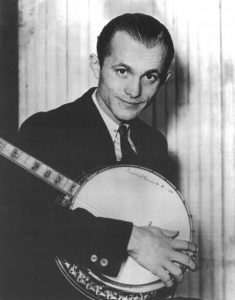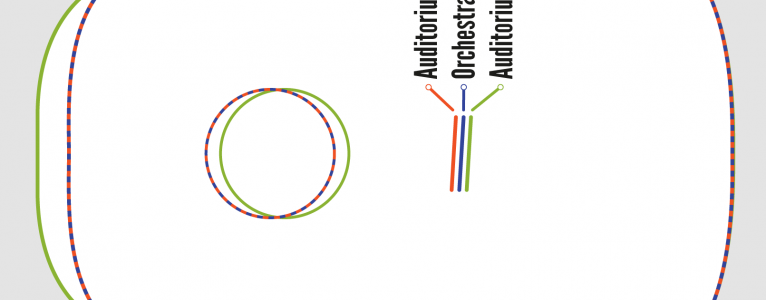I’ve been thinking a lot about the design of my auditorium/000/orchestra model.
 I’ve been reading up on the early history of the instruments, and it’s pretty interesting. As I’ve mentioned elsewhere, the orchestra model was built in cooperation with Perry Bechtel, virtuoso plectrum banjo player. He approached Martin Guitars in 1929, wanting a guitar with a long scale length (27″!) and 15 frets clear of the body, based on the largest guitar that Martin made at the time, the 000.
I’ve been reading up on the early history of the instruments, and it’s pretty interesting. As I’ve mentioned elsewhere, the orchestra model was built in cooperation with Perry Bechtel, virtuoso plectrum banjo player. He approached Martin Guitars in 1929, wanting a guitar with a long scale length (27″!) and 15 frets clear of the body, based on the largest guitar that Martin made at the time, the 000.
Martin’s guitars up to that point had 12 frets clear of the body. According to a great article by George Gruhn, Gibson had been making guitars with 14 frets clear of the body since the L-5 was introduced in 1923. Our 1929 Gibson TG-0 tenor guitar has 15 frets clear of the body, so you can see where Bechtel got that number—maybe he was playing one of those!
Well, Mr. Bechtel got some of what he wanted. Martin gave him a guitar with a 25.4″ scale (longer than the 24.9″ scale used on the 00 & 000) and 14 clear frets, with a shortened 000 body. This became the orchestra model, or OM.
The scale change coupled with the shortened body creates a pretty big engineering difference.
For instance, having gotten used to playing the 24.9″ scale length on my grand concert guitars, I find the strings feel stiff on a 25.4″ scale length guitar. They feel so stiff that I wondered what the actual difference in tension is. After doing a little math, it turns out that it’s about 6% more than the shorter scale. So if you use D’Addario light gauge strings, the 24.9″ scale length produces about 154 pounds of tension compared to about 163 pounds at 25.4″. (For extra credit, a 27” scale length using the same strings at the same pitch would produce 194 pounds of tension.)
 The other major change is the location of the saddle in relation to the body and the soundboard bracing. You can see what I mean in this image, where I lined up the lower bout across all three models. Keep in mind that the auditorium uses the 24.9″ scale and the orchestra uses the 25.4″ scale.
The other major change is the location of the saddle in relation to the body and the soundboard bracing. You can see what I mean in this image, where I lined up the lower bout across all three models. Keep in mind that the auditorium uses the 24.9″ scale and the orchestra uses the 25.4″ scale.
You can read more about the early history of Bechtel and the OM in this article from the Fretboard Journal.
Well, I’ve got my prototype plans back from Triangle Blueprints; it’s time to build the forms and get the bodies started. Next time, I’ll talk more about the necks and appointments.
